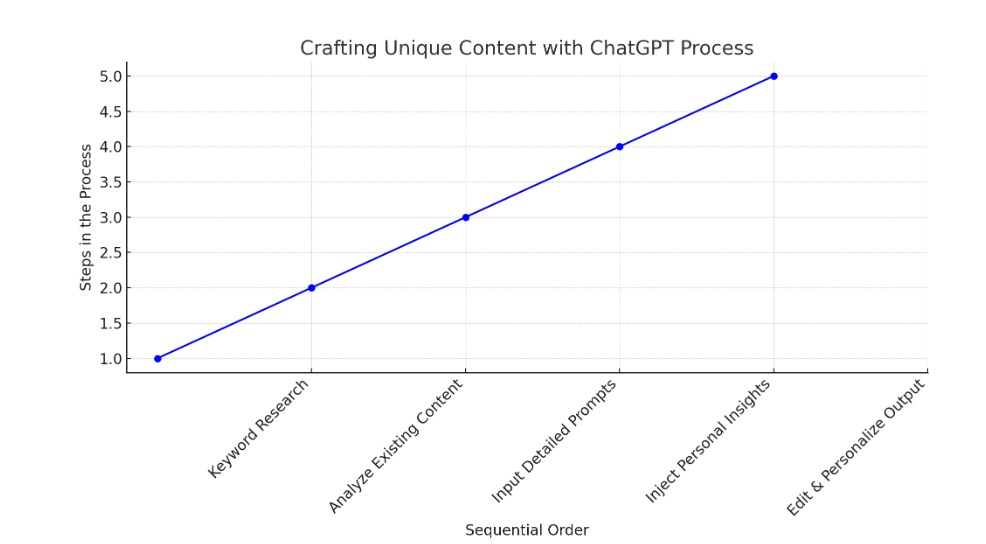How to use ChatGPT for Blogging: A Comprehensive Guide for Bloggers

As a passionate blogger and the founder of ClickDo and SeekaHost, I’ve navigated the dynamic landscape of content creation, always seeking innovative ways to optimize productivity while maintaining quality.
The advent of AI, particularly ChatGPT, has revolutionized how we approach writing, offering remarkable solutions for bloggers, regardless of their writing prowess or enthusiasm levels.
In this guide, I’ll explore how bloggers can utilize ChatGPT to craft engaging, search-engine-friendly posts, dispel myths surrounding AI content, and provide actionable strategies for creating unique, valuable content.
Table of Contents
Embracing ChatGPT for Effortless Blogging
The Power of AI in Content Creation
ChatGPT, with its advanced language model capabilities, serves as a virtual writing assistant, transforming your scattered thoughts and ideas into well-structured, articulate blog posts. By inputting your raw thoughts and specifying the tone you desire, ChatGPT can generate articles that not only resonate with your voice but also appeal to your target audience. This process is not just about easing the writing burden; it’s about enhancing creativity and efficiency, allowing you to produce more content within a shorter timeframe.
Overcoming the Myth: AI Content and Search Engine Indexing
There’s a prevailing myth that AI-generated content doesn’t index on search engines like Google, Bing, and Yahoo. This misconception stems from concerns over the originality and quality of AI-produced texts. However, the truth is that search engines prioritize content value, relevance, and uniqueness over the means of creation. AI-generated articles, when crafted thoughtfully and infused with genuine insight, stand as equal contenders in the digital arena, capable of achieving high rankings.
Crafting Unique Content with ChatGPT
The key to leveraging ChatGPT effectively lies in creating unique, engaging content that stands out. Here’s how:
- Start with Keyword Research: Before you begin writing, identify the keywords and phrases your target audience uses. This foundational step ensures your content is discoverable and relevant.
- Check Existing Content: Analyze what’s already available on your chosen topic. Understanding the existing landscape allows you to identify gaps you can fill or perspectives only you can offer.
- Input Detailed Prompts: When working with ChatGPT, the more specific your prompts, the better. Provide clear guidance on the topic, tone, and unique angles you wish to explore. This helps generate content that reflects your voice and meets your audience’s needs.
- Inject Personal Insights and Experiences: To make your content genuinely unique, integrate your personal insights, experiences, or proprietary data. ChatGPT can help structure and polish these inputs, but the originality comes from you.
- Edit and Personalize the Output: Always review and edit the AI-generated text. Personalizing the content further ensures it aligns with your brand voice and adheres to your quality standards.
This is a graph illustrating the process of crafting unique content with ChatGPT, outlining the sequential steps from keyword research to the final editing and personalization of the output. This visual guide helps in understanding the progression and importance of each stage in creating content that stands out.
The Strategic Use of ChatGPT in Daily Blogging
Incorporating ChatGPT into your daily blogging routine can dramatically increase your output without compromising on quality. Use it to brainstorm ideas, overcome writer’s block, or draft entire articles. However, remember the importance of adding a personal touch to each post to ensure it resonates with your readers and stands out to search engines.
Here’s a table of the top 5 AI writing tools that utilize concepts similar to ChatGPT, along with their key features and popular use cases:
| Tool Name | Key Features | Popular Use Cases |
|---|---|---|
| ChatGPT | Versatile language model capable of generating diverse types of content. | Blogging, coding assistance, conversation simulation. |
| Jasper (formerly Jarvis) | Designed for marketers, offers templates for various marketing content. | Marketing copy, product descriptions, email campaigns. |
| Writesonic | Focuses on digital marketing content, provides tools for ads, emails, and more. | SEO content, ad copy, landing pages. |
| Copy.ai | Simplifies content creation with templates for social media, blogs, and product descriptions. | E-commerce product descriptions, social media content, website copy. |
| Sudowrite | Aimed at authors and creative writers, offers tools for brainstorming and editing. | Creative writing, rewriting and expanding text, overcoming writer’s block. |
These tools cater to a range of content creation needs, from marketing and SEO to blogging and creative writing, leveraging AI to enhance productivity and creativity.
top 10 considerations for bloggers using ChatGPT for writing, researching, browsing the web, and supporting blog writing:
| Consideration | Description |
|---|---|
| Content Originality | Ensure the content generated is unique to avoid duplicity issues. |
| SEO Optimization | Incorporate SEO strategies to improve search engine ranking. |
| Voice and Tone Consistency | Maintain a consistent voice and tone that resonates with your audience. |
| Fact-Checking | Verify facts and data provided by AI to maintain credibility. |
| Content Structuring | Use ChatGPT to organize content logically for better readability. |
| Keyword Integration | Strategically integrate keywords without compromising the natural flow. |
| Creative Input | Blend AI-generated content with personal insights and creativity. |
| Audience Engagement | Craft content that prompts reader interaction and engagement. |
| Competitor Analysis | Analyze competitors’ content to identify gaps and opportunities. |
| Multi-Format Content Creation | Leverage ChatGPT for creating not just text, but also scripts for videos, podcasts, etc. |
These considerations are crucial for bloggers aiming to optimize their use of ChatGPT for enhanced content creation, ensuring quality, originality, and engagement across their blogging efforts.
Conclusion
The narrative that bloggers lacking writing skills or motivation cannot produce quality content is becoming obsolete with the rise of AI tools like ChatGPT. By leveraging this technology smartly and ethically, you can create search-engine-optimized, unique content that attracts and retains your audience. Remember, the effectiveness of AI in blogging is not just about the technology itself but how creatively and strategically you use it to complement your skills and insights.
As we continue to explore the potential of AI in content creation, let’s embrace these tools not as replacements but as partners in our creative journey. With ChatGPT, the future of blogging looks not only more efficient but also more exciting. Happy blogging!

